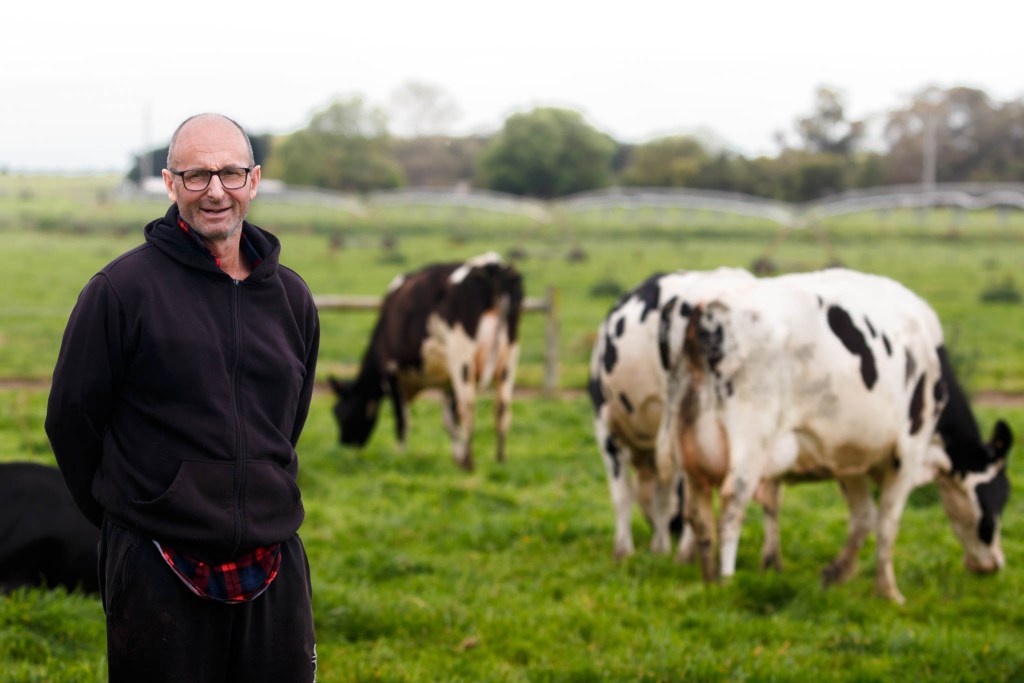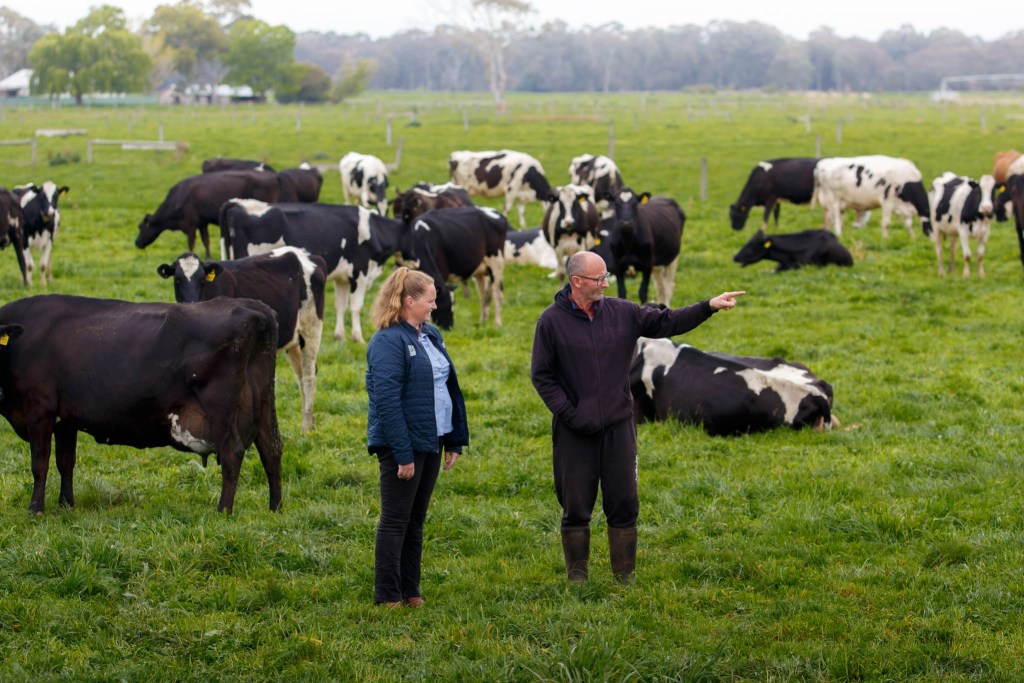Genetics solutions for farm business decisions
Milking less cows, moving and changing their herd’s calving pattern. Guy and Leanne Gallatly have a few things on their plate in the next year. But what might seem like daunting changes for some, have been made much easier for this Maffra couple because they’ve embraced breeding tools and genetic solutions.

Working with ABS Sales Representative Rebecca Phelan, Guy uses short gestation sires to condense calving and genomic testing to select his best replacements. Shifting to “semi-retirement”, his breeding priorities changed. “Hopefully moving on to that stage of our life the management is going to be more about lifestyle than anything else,” Guy said. “Breeding comes into that with short gestation, calving ease and temperament, plus we all like a nice cow to look at.”
Initially Guy didn’t choose to breed with short gestation sires because of their ability to reduce the gestation of a calf ensuring the cow or heifer calves earlier. He chose them because of their calving ease, temperament, and Balanced Performance Index (BPI) ranking. But now he uses short gestation sires to breed cows at the end of joining to ensure his calving period remains within 10 weeks and late calvers have the best chance of a successful rejoining. “Breeding with short gestation sires helps get all your cows in earlier,” Guy said. “And what comes around, goes around. Calving earlier, they have more time before for the next joining – more time between calving and joining. “Plus, there’s more production, even if it is just a few weeks.”
As Guy and Leanne transition into semi-retirement on their new farm, choosing short gestation sires with a guaranteed easier calving, has become as much about reducing their workload – or the constant requirement to check calving cows – as anything else. ABS’ Rebecca Phelan said most short gestation sires had a better than average breeding value for calving ease.
The top ABS bulls in August 2022, with a Gestation Length Australian Breeding Value (ABV) of minus seven days or better, had a Calving Ease ABV of 103 to 105 – three to five points more than the breed average.
The Gallatlys have used ABS sire De-Su 13530 SEVILLE – with a Gestation Length ABV of minus 10 and a Calving Ease ABV of 104. Rebecca said it was important to consider the contribution of both the sire and dam when it came to breeding for gestation length. “In general, the Australian Breeding Value for Gestation Length should be halved to take into consideration the genetic contribution from the dam and sire, not all of the trait comes from the sire,” she said. “Take SEVILLE for example, with a Gestation Length of minus 10 days, the actual number of days you should expect your cow to calve – if she’s joined to SEVILLE- is five days earlier plus whatever the cow contributes to the offspring. The benefits of using short gestation sires aren’t just limited to management and cow health,” according to Rebecca. “Your calves are more of a uniform group, because they are closer in age,” she said.

Back on farm at Maffra, the decision about which animals to retain when Guy and Leanne move to their own property next year has been made easier thanks to genomic testing. “We had 300 cows and we had 80 heifers – one year it was up to 120 heifers – which ones do you get rid of?” Guy said. “Sure, you get rid of those with mastitis and some of older cows, problem cows, but what do you get rid of after that? “That’s when genomic testing came into it. We decided on Rebecca’s advice to genomically test our calves each year and to sell the ones that don’t come up to scratch to export.”
Guy and Leanne’s first genomic tests were conducted two years ago. Then their benchmark or “cut-off” was 150 BPI$, anything below that was sold. That year their highest BPI$ was 270. Recently, their benchmark has lifted to 250 BPI$ with the highest animal at 470 BPI$. This rise in the benchmark BPI reflects the genetic improvement made on their farm in that short amount of time.
Some of the ABS sires the Gallatlys have used in recent years include JERONIMO P, KENOBI, HOWLER, EPISODE, KIMBALL, TAILOR, TOPSY, GIANNIS and ENVOY. These sires were selected according to the Gallatlys’ breeding priorities and recommended by the ABS Genetic Management System® (GMS®). Guy said he makes a lot of decisions on “rep (representative) advice”, has confidence in genomics and simplicity is the key. The ideal way to approach breeding, semi-retirement or not.
